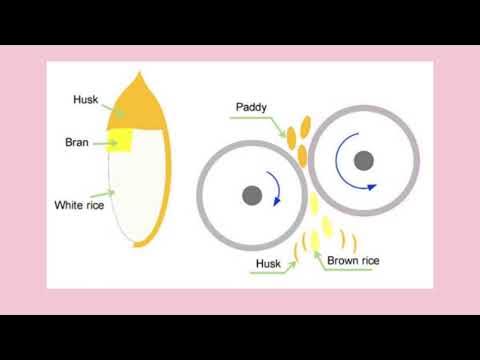چگونه ميتوان برنج كته را مثل برنج آبكش دان در آورد جوادجوادي
Summary
TLDRThis instructional video script offers a detailed guide on how to cook boiled rice, a staple in Asian cuisine. The presenter emphasizes the importance of washing rice, using the right amount of water, and adjusting the cooking time and temperature to achieve the desired texture. They also discuss the option of adding oil to prevent rice from becoming mushy, and the value of using high-quality kitchen accessories for consistent results. The script concludes with a demonstration of the final product, showing perfectly cooked, separate grains of rice.
Takeaways
- 🍚 Washing rice is important for cleanliness and removing impurities.
- 💧 The choice of water temperature is crucial; warm water is preferred for boiling rice.
- ⏱️ Soaking rice for 10-15 minutes before boiling helps it to absorb water and expand.
- 🤲 The amount of water added should be measured by the top knuckle above the rice to prevent mashing.
- 🧂 Adding a teaspoon of salt to the rice water enhances flavor.
- 🥄 The use of oil in the rice water is optional and depends on the type of rice and desired texture.
- 🔥 Boiling the rice with occasional stirring prevents it from sticking to the pot.
- 🕳️ Observing the formation of holes in the rice indicates that the water is drying out.
- 🔄 Stirring and rearranging the rice after the water dries helps in even cooking.
- 🔥 Using low heat with a lid on the pot allows the rice to brew and steam properly.
- ⏳ Cooking the rice for approximately 20 minutes on low heat ensures it is ready and fluffy.
Q & A
What is the main topic of the video script?
-The main topic of the video script is teaching how to cook boiled rice, particularly focusing on the method to avoid mashed rice and achieve separate grains.
Why does the speaker mention that Asian people make boiled water hard?
-The speaker implies that the process of making boiled rice is often perceived as difficult by Asian people, possibly due to cultural or traditional cooking methods that may complicate the process.
What is the importance of knowing the degree of cooking for rice according to the speaker?
-Knowing the degree of cooking for rice is important because it helps in achieving the desired texture, either soft or separate, and is crucial for making various types of dishes.
Why does the speaker emphasize washing the rice before cooking?
-The speaker emphasizes washing the rice to remove any impurities and to ensure that the rice is clean before cooking, which is a necessary step for good quality boiled rice.
What is the recommended water temperature for soaking the rice according to the script?
-The recommended water temperature for soaking the rice is warm water, as it is considered the best choice for preparing boiled rice.
How long should the rice be soaked before cooking according to the video script?
-The rice should be soaked for 10-15 minutes before cooking.
What is the method for determining the correct water level for the rice?
-The correct water level is determined by placing your finger on the rice and adding water until it reaches the top knuckle, adjusting based on the desired texture of the rice.
Why does the speaker add salt to the rice water?
-The speaker adds a teaspoon of salt to the rice water to enhance the flavor of the rice.
What is the speaker's opinion on adding oil to the rice water?
-The speaker suggests that adding oil to the rice water depends on the type of rice and the desired outcome. Too much oil can destroy the taste of the rice, but a small amount can help prevent it from mashing.
How does the speaker ensure that the rice does not mash during cooking?
-The speaker ensures that the rice does not mash by controlling the amount of water, stirring the rice when it boils, and adjusting the heat to low after the water has evaporated.
What is the final step the speaker mentions for preparing the boiled rice?
-The final step mentioned by the speaker is to let the rice brew on low heat with the lid on, and placing a cloth on top of the lid to absorb excess moisture, after which the rice is ready to be served.
Outlines

Dieser Bereich ist nur für Premium-Benutzer verfügbar. Bitte führen Sie ein Upgrade durch, um auf diesen Abschnitt zuzugreifen.
Upgrade durchführenMindmap

Dieser Bereich ist nur für Premium-Benutzer verfügbar. Bitte führen Sie ein Upgrade durch, um auf diesen Abschnitt zuzugreifen.
Upgrade durchführenKeywords

Dieser Bereich ist nur für Premium-Benutzer verfügbar. Bitte führen Sie ein Upgrade durch, um auf diesen Abschnitt zuzugreifen.
Upgrade durchführenHighlights

Dieser Bereich ist nur für Premium-Benutzer verfügbar. Bitte führen Sie ein Upgrade durch, um auf diesen Abschnitt zuzugreifen.
Upgrade durchführenTranscripts

Dieser Bereich ist nur für Premium-Benutzer verfügbar. Bitte führen Sie ein Upgrade durch, um auf diesen Abschnitt zuzugreifen.
Upgrade durchführenWeitere ähnliche Videos ansehen

السفة بالروز للضيافة❤️فاخرة وصفتي مبتكرة بتخليطة جهنمية كتحمق حصريًا على قناتي بطريقة كتوجد فنص ساعة

The Perfect Japanese Fast Food, GYUDON | Beef Bowl

RESEP NASI GORENG KENCUR TERENAK BIKIN NAGIH

How To Make Sushi with Iron Chef Morimoto

How Rice is Milled: Exploring the Rice Milling Process from Harvesting to Packaging (Flowchart)

Japanese Curry 101 with Rina Sawayama (Feat. Emmymade in Japan) | Curry Shop
5.0 / 5 (0 votes)
